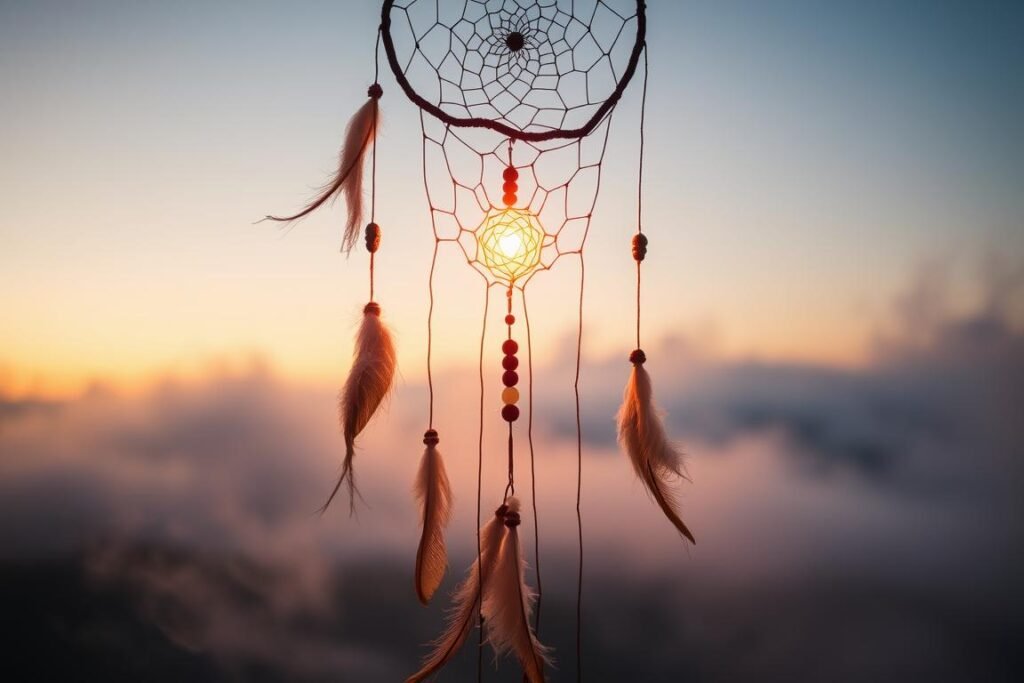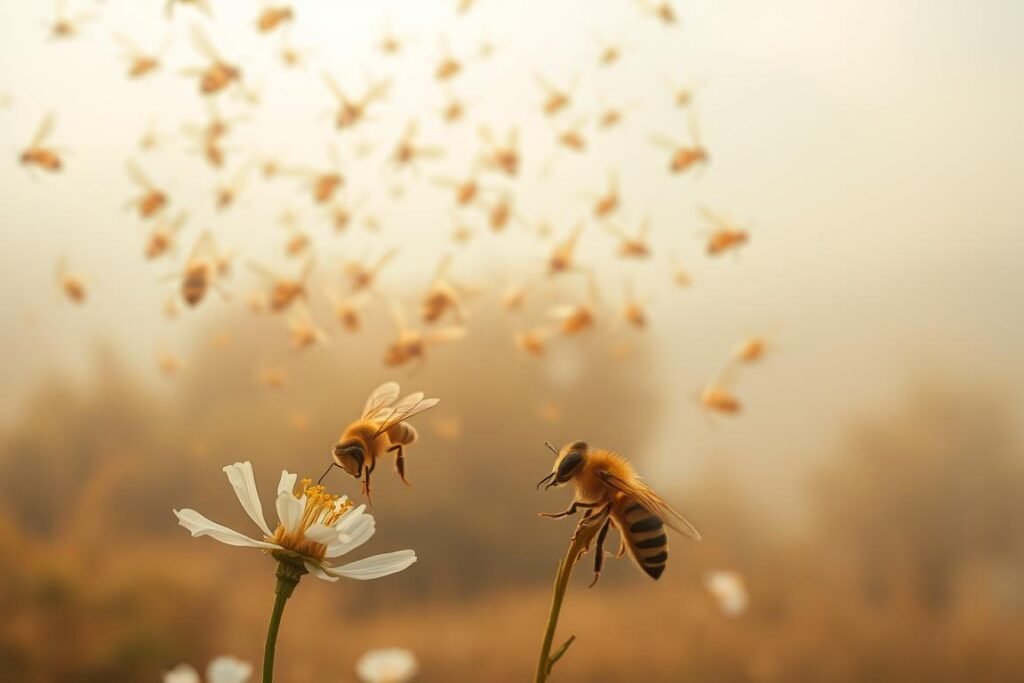Dream catchers are more than just decorative items. They hold deep cultural roots, originating from the Ojibwe and Lakota tribes. These intricate designs were created as protective talismans, believed to filter out negative energy and promote healing.
Over time, their significance has expanded beyond their tribal origins. Today, they are widely recognized as symbols of hope and positivity. Many people use them in modern spiritual practices to enhance their sense of peace and well-being.
Understanding their cultural background is essential. This ensures respect for their origins while appreciating their role in contemporary life. Whether for protection or as a reminder of positive energy, dream catchers continue to inspire and comfort.
The Origins of Dream Catchers
The story of dream catchers begins with the rich traditions of Native American culture. These intricate designs are deeply rooted in the history of the Ojibwe and Lakota tribes. They were not just decorative but served as powerful symbols of protection and healing.
Roots in Native American Culture
Dream catchers originated as part of the spiritual practices of the Ojibwe tribe. According to legend, Asibikaashi, also known as Spider Woman, created them to protect her people. She wove webs to catch harmful energies, ensuring safety for infants and families.
Over time, the use of dream catchers spread to other tribes, including the Lakota. Each tribe added its unique interpretations, enriching their cultural significance. The Lakota, for example, viewed the web as a filter for ideas rather than just dreams.
Legends of the Ojibwe and Lakota Tribes
The Ojibwe legend of Asibikaashi highlights her role as a spiritual protector. She used willow hoops and sinew webs to create dream catchers, which were hung above cradles to shield infants from negative influences.
In contrast, the Lakota legend involves Iktomi, a trickster god. He taught the importance of the web’s symbolism through a vision of a willow hoop. This vision emphasized filtering thoughts and ideas to maintain clarity and focus.
Traditional materials included red willow hoops, sinew webs, and organic feathers. These elements were chosen for their natural properties and symbolic meanings. However, modern creations often use alternative materials due to legal restrictions on eagle feathers.
| Component | Traditional Material | Symbolism |
|---|---|---|
| Hoop | Red Willow | Circle of Life |
| Web | Sinew | Filtering Energy |
| Feathers | Organic (Eagle) | Guidance and Protection |
Understanding the history and cultural roots of dream catchers helps us appreciate their deeper significance. They are more than just beautiful objects; they are a testament to the wisdom and creativity of Native American traditions.
The Spiritual Significance of Dream Catchers
Rooted in ancient traditions, these tools serve as guardians of energy. They are believed to filter out harmful forces while promoting positivity. Understanding their spiritual function helps us appreciate their deeper role in daily life.

Protection from Negative Energies
According to Great Plains beliefs, the night air carries competing energies. The web design acts as a filter, trapping harmful forces while allowing positive energy to flow. This process ensures a sense of safety and calm.
Sunrise plays a key role in purification. Trapped negative energies dissolve at dawn, leaving behind only positivity. This daily renewal symbolizes hope and renewal.
Filtering Good and Bad Dreams
The Ojibwe and Lakota tribes have different interpretations of the web’s function. The Ojibwe see it as a barrier against bad dreams, while the Lakota view it as a trap for good ideas. Both interpretations highlight its protective role.
Feathers are often used to guide energy, while gemstones offer alternative conduits. Smudging rituals help maintain the tool’s effectiveness, ensuring it remains a source of positive energy.
| Web Pattern | Points | Meaning |
|---|---|---|
| Spider Woman | 8 | Honors the creator |
| Moon Phases | 13 | Represents cycles of life |
| Energy Filter | 5-13 | Varies by tradition |
These designs are more than decorative. They are tools for maintaining balance and harmony in life. By understanding their spiritual significance, we can use them to enhance our well-being.
Components of a Dream Catcher and Their Meanings
Each part of a dream catcher carries its own unique symbolism. From the hoop to the web, every element plays a role in its purpose. Understanding these components helps us appreciate their cultural and spiritual depth.
The Hoop: Symbol of the Circle of Life
The hoop represents the circle of life, a central concept in many traditions. Traditionally made from red willow, it symbolizes unity and continuity. Modern versions often use metal or wood, but the meaning remains the same.
Hoop diameters vary based on use. A 5-inch hoop is ideal for personal spaces, while an 8-inch one is used for ceremonial purposes. This size difference reflects its role in daily life and special rituals.
The Web: Capturing Dreams and Thoughts
The web is the heart of a dream catcher. It acts as a filter, trapping negative energies while allowing positive ones to pass. The design often resembles a spider web, honoring the creator in Ojibwe legend.
Web tension also holds meaning. A loose weave symbolizes flexibility, while a tight one represents strength. Both styles reflect the balance between resilience and adaptability.
Feathers, Beads, and Gemstones: Guides and Protectors
Feathers are more than decorative. They guide energy, with each type carrying its own meaning. Owl feathers symbolize wisdom, while eagle feathers represent courage.
Beads add another layer of symbolism. A single bead honors the creator, while multiple beads signify captured dreams. Materials like bone, clay, and seeds are often used for their natural properties.
Stones like amethyst and turquoise are modern additions. Amethyst promotes tranquility, while turquoise offers protection. These gemstones enhance the dream catcher’s purpose in contemporary settings.
Dream Catcher Spiritual Meaning in Modern Times
In today’s world, these intricate designs have evolved beyond their traditional roots. Once sacred talismans, they are now widely recognized as decorative items in homes and workplaces. This shift reflects their adaptability and enduring appeal.
From Sacred Talismans to Decorative Items
The 1980s marked a turning point with mass-produced versions appearing in head shops. While this made them more accessible, it also led to concerns about cultural dilution. Fast fashion iterations often lack the significance of authentic designs.
Despite this, museums and Indigenous artisans work to preserve traditional craftsmanship. Exhibits showcase their cultural heritage, ensuring their stories are not forgotten. Legal cases, like the 1993 Indian Arts and Crafts Act, also protect their authenticity.
Therapeutic and Spiritual Uses Today
Modern applications highlight their therapeutic potential. Studies by the NIH show that 24% of sleep clinics use them as comfort objects. They are especially effective in PTSD therapy within Indigenous communities.
New Age practices have embraced these tools, integrating them into Reiki sessions. Energy grids with crystals and chakra-aligned color schemes enhance their healing properties. This blend of tradition and innovation keeps their energy alive in contemporary settings.
| Modern Use | Purpose | Impact |
|---|---|---|
| Sleep Clinics | Comfort Objects | Promotes Relaxation |
| Reiki Sessions | Energy Grids | Enhances Healing |
| PTSD Therapy | Cultural Healing | Supports Recovery |
Cultural Appreciation vs. Appropriation
The balance between cultural appreciation and appropriation is a critical conversation. Dream catchers, rooted in Native American traditions, hold deep cultural and spiritual significance. While they have become popular worldwide, it’s essential to approach them with respect and understanding.
Respecting Indigenous Traditions
Understanding the origins of dream catchers is the first step in respecting Native American traditions. These items are not just decorative; they carry spiritual and cultural weight. Misusing or mass-producing them without understanding their significance can lead to cultural appropriation.
The Indian Arts and Crafts Act of 1990 ensures that products labeled as Native American are authentically made by Indigenous artisans. This law protects their cultural heritage and promotes fair trade practices. By supporting authentic creations, we honor their traditions and provide economic opportunities for Indigenous communities.
Supporting Native American Artisans
One way to show respect is by purchasing dream catchers directly from Native American artisans. Brands like Eighth Generation and Beyond Buckskin adhere to fair trade standards, ensuring that artists receive fair compensation. These brands also reinvest a portion of their profits into tribal funds, supporting community development.
Educational partnerships with tribal councils further promote cultural awareness. Workshops and exhibits teach the history and craftsmanship behind these items, fostering a deeper appreciation for their cultural roots.
| Ethical Brand | Focus | Impact |
|---|---|---|
| Eighth Generation | Authentic Indigenous Art | Supports Native Artists |
| Beyond Buckskin | Fair Trade Practices | Promotes Cultural Heritage |
By choosing ethically sourced dream catchers, we contribute to the protection and preservation of Native American culture. This approach ensures that their traditions continue to thrive for future generations.
How to Create Your Own Dream Catcher
Crafting your own protective talisman can be a deeply personal and rewarding experience. Whether you’re drawn to its cultural roots or its aesthetic appeal, making one allows you to infuse it with your unique energy. This guide will walk you through the process, from selecting materials to adding the final touches.

Materials and Preparation
Choosing the right materials is the first step. Traditional options include natural elements like red willow hoops, sinew for the web, and organic feathers. However, synthetic alternatives like metal hoops and nylon thread are also popular for their durability.
Here’s a quick comparison of natural vs. synthetic materials:
- Natural: Red willow hoops, sinew, organic feathers (ensure compliance with U.S. MBTA).
- Synthetic: Metal hoops, nylon thread, dyed feathers.
For suede wrapping, measure 18 times the hoop diameter to ensure full coverage. Traditional knots require 540+ wraps for an 8-inch hoop, creating a sturdy base for the web.
Step-by-Step Construction Guide
Follow this step-by-step process to build your piece:
- Wrap the hoop with suede, securing it with glue or a knot.
- Create the web using sinew or thread, starting from the center and working outward. Complex weaves like the double spiral or medicine wheel add depth and symbolism.
- Attach feathers and beads to the bottom. Ensure feathers are securely tied and comply with legal guidelines.
If the web sags orbeadsslip, adjust the tension or use a stronger adhesive. These troubleshooting tips ensure a polished final product.
Infusing Your Dream Catcher with Intention
Once complete, infuse your creation with intention. Place it under moonlight to charge its energy or use a sage blessing to purify it. Mantras like “I am protected” or “Positive energy flows through me” can enhance its purpose.
This process not only results in a beautiful piece but also connects you to its deeper significance. By crafting it yourself, you create a tool that reflects your personal journey and aspirations.
The Enduring Legacy of Dream Catchers
The enduring legacy of these intricate designs continues to shape modern culture. Efforts by UNESCO to recognize their artistry highlight their global significance. Contemporary Indigenous artists like Nadema Agard are preserving traditional craftsmanship while innovating for the future.
Climate change poses challenges, such as willow shortages in traditional regions. This impacts the availability of authentic materials. Despite this, new trends like AR-enabled virtual designs are emerging, blending tradition with technology.
As we engage with this living tradition, it’s essential to do so ethically. Supporting Indigenous artisans ensures their healing and protection practices remain alive. By respecting their origins, we honor the energy and wisdom they embody.







